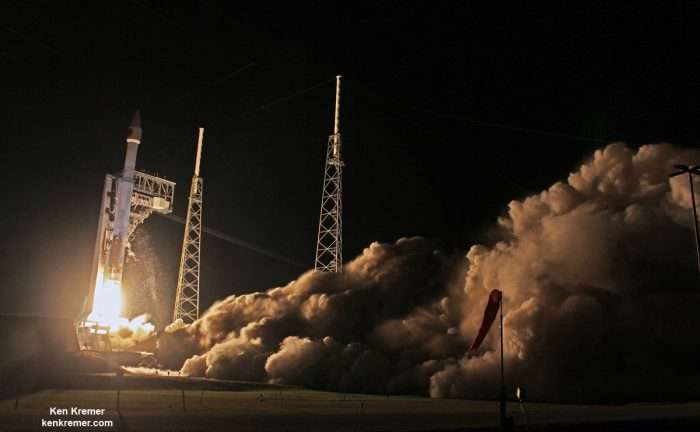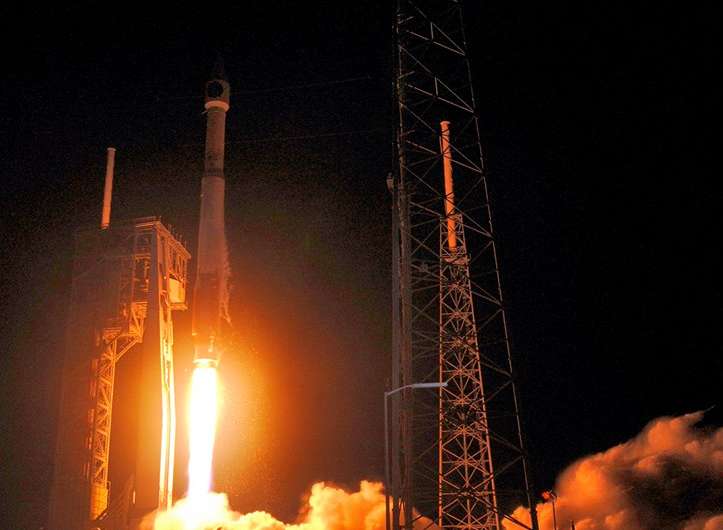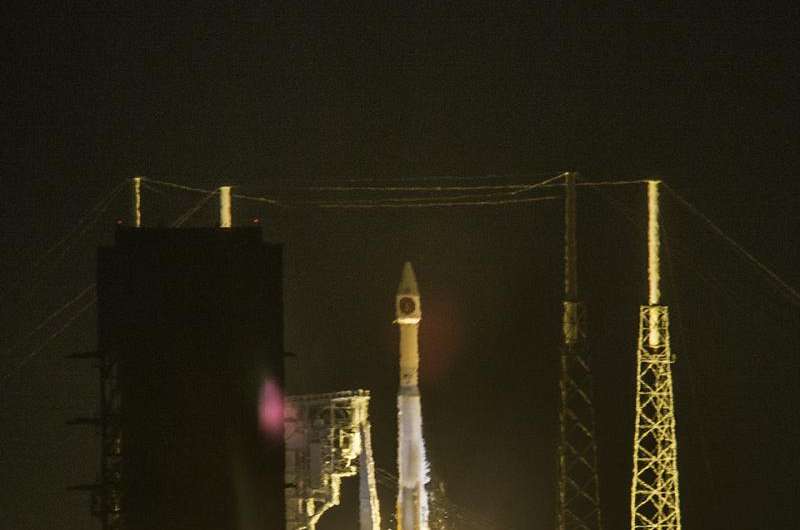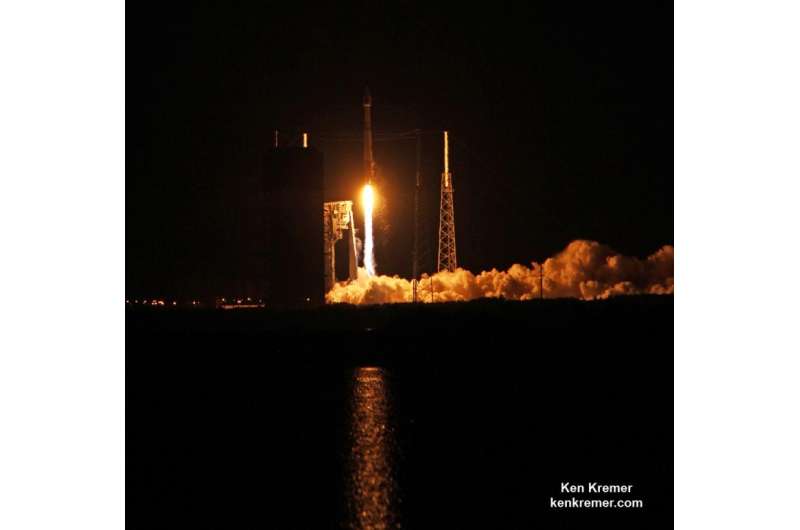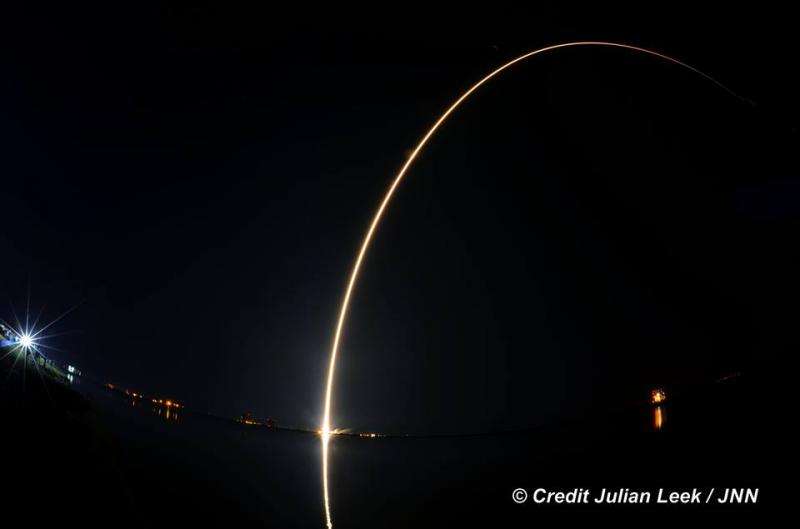United Launch Alliance (ULA) Atlas V rocket carrying SBIRS GEO Flight 3 early missile warning satellite for USAF lifts off at 7:42 p.m. ET on Jan. 20, 2017 from Space Launch Complex-41 on Cape Canaveral Air Force Station in Florida. Credit: Ken Kremer/kenkremer.com
A vital missile reconnaissance satellite for the U.S. Force soared to space atop an Atlas V rocket from Cape Canaveral at dinnertime Friday night, Jan. 20, 2017.
The United Launch Alliance Atlas V rocket carrying the $1.2 Billion Space Based Infrared System (SBIRS) GEO Flight 3 infrared imaging satellite lifted off at 7:42 p.m. ET from Space Launch Complex-41 on Cape Canaveral Air Force Station, Fla.
"GEO Flight 3 delivery and launch marks a significant milestone in fulfilling our commitment to the missile-warning community, missile defense and the intelligence community. It's an important asset for the warfighter and will be employed for years to come," says Lt. Gen. Samuel Greaves, SMC commander and Air Force program executive officer for space, in a statement.
The Space Based Infrared System is designed to provide global, persistent, infrared surveillance capabilities to meet 21st century demands in four national security mission areas: missile warning, missile defense, technical intelligence and battlespace awareness.
"The hard work and dedication of the launch team has absolutely paid off," Col. Dennis Bythewood, director of the Remote Sensing Directorate said in a statement.
Nighttime blastoff of ULA Atlas V rocket carrying the USAF SBIRS GEO 3 missile defense satellite to orbit on Jan. 20, 2017 from Space Launch Complex-41 at Cape Canaveral Air Force Station in Florida. Credit: Julian Leek
"Today's launch of GEO Flight 3 culminates years of preparation by a broad team of government and industry professionals."
The SBIRS GEO Flight 3 missile defense observatory built for the USAF will detect and track the infrared signatures of incoming enemy missiles twice as fast as the prior generation of satellites and is vital to America's national security.
SBIRS GEO Flight 3 was launched to geosynchronous transfer orbit to an altitude approx 22,000 miles (36,000 kilometers) above Earth.
ULA Atlas V launch of USAF SBIRS GEO 3 missile defense satellite on Jan. 20, 2017 from Space Launch Complex-41 at Cape Canaveral Air Force Station in Florida. Credit: Joe Sekora
The Atlas V was launched southeast at an inclination of 23.29 degrees. SBIRS GEO Flight 3 separated from the 2nd stage as planned 43 minutes after liftoff.
Following separation, the spacecraft began a series of orbital maneuvers to propel it to a geosynchronous earth orbit. Once in its final orbit, engineers will deploy the satellite's solar arrays and antennas. The engineers will then complete checkout and tests in preparation for operational use, USAF officials explained.
Lockheed Martin is the prime contractor, with Northrop Grumman as the payload integrator.
The SBIRS team is led by the Remote Sensing Systems Directorate at the U.S. Air Force Space and Missile Systems Center. Air Force Space Command operates the SBIRS system.
-
United Launch Alliance (ULA) Atlas V rocket carrying SBIRS GEO Flight 3 missile detection satellite for USAF lifts off at 7:42 p.m. ET on Jan. 20, 2017 from Space Launch Complex-41 on Cape Canaveral Air Force Station in Florida. Credit: Ken Kremer/kenkremer.com
-
ULA Atlas V rocket carrying the USAF SBIRS GEO 3 missile defense satellite streaks to orbit on Jan. 20, 2017 after nighttime blastoff at 7:42 p.m. ET from Space Launch Complex-41 at Cape Canaveral Air Force Station in Florida. Credit: Julian Leek
Source: Universe Today
